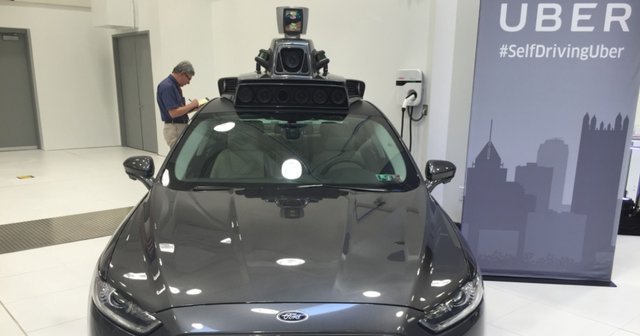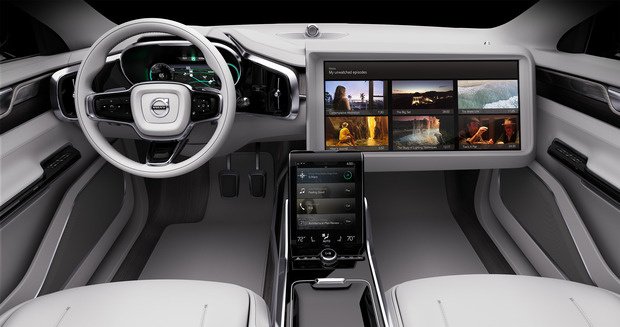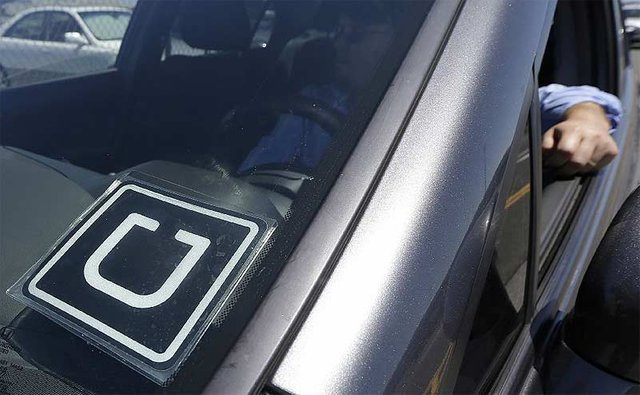You can hail a self-driving Uber in San Francisco starting today
The future of Automation
For the last few months, Uber’s self-driving cars have been prowling the streets of San Francisco, forecasting the inevitable moment when the ride-hailing giant starts inviting passengers to take autonomous trips in the city where it first launched over seven years ago.
That moment has finally arrived.
Starting today, anyone in San Francisco who hails an UberX could find themselves in the backseat of a luxury, self-driving Volvo XC90, complete with leather interior, spinning LIDAR sensor, and a trunk full of computing power. It’s where I found myself last week, after being invited out to the Bay Area for a sneak peak before the official launch.

With a fine mist in the air, the car drove itself through South of Market with little fanfare, navigating turns and yielding for distracted pedestrians without any human intervention. The car’s spinning LIDAR sensor and rooftop camera array definitely elicited a few slack-jawed stares from passersby.
There were two Uber employees in the front seats, but it was clear that it was the car, not the humans, that was shepherding me into this strange and uncertain future.
As I wrote last September when Uber launched its first self-driving service in Pittsburgh, the experience was equal parts thrilling and mundane: thrilling because of the implications for the future of transportation, and mundane because it was like driving with your overly cautious grandmother.
But unlike Pittsburgh, Uber wouldn’t let me get behind the wheel, so all of my impressions of the car’s self-driving capabilities are from the backseat.

While riding in the car is an uneventful experience, keeping pace with Uber's brazen moves to push autonomy onto the public street is not boring. California has some of the strictest autonomous driving rules in the country, and the state’s DMV does not have Uber listed among the companies that have obtained permits to test their vehicles on public roads.
California defines autonomous vehicles as cars that drive “without the active physical control or monitoring of a natural person.” Uber says that doesn’t apply to its self-driving cars, which can’t be driven without a human monitoring from the driver seat. “All of our vehicles are compliant with applicable federal and state laws,” a spokesperson said.
In a statement provided to The Verge, the California DMV urged Uber to obtain an autonomous driving permit. “The California DMV encourages the responsible exploration of self-driving cars.
We have a permitting process in place to ensure public safety as this technology is being tested. Twenty manufacturers have already obtained permits to test hundreds of cars on California roads. Uber shall do the same.”
But what about the car? The Volvo XC90 is a gorgeous vehicle fit for a family road trip. It was Motor Trend’s “SUV of the Year” last year, and has been described by Car and Driver as “a handsome, square-jawed Swede striving to offer more efficiency and safety than its rivals, while adding a dose of Scandinavian flair.”
It’s a fancy way to describe a fancy car, which makes sense when you consider that Uber started out as a luxury service. The company wasn’t going to launch a fleet of self-driving Toyota Camrys for its public debut on its own home turf.

Occasionally, the safety driver would take control, like when he wanted to do something that could be perceived as reckless by a computer but totally normal to a human, like cut across three lanes of traffic. And the car occasionally kicked itself out of autonomy mode, forcing the driver to take the wheel. While Uber says the goal is full autonomy, the company admits the technology is not there yet.
Uber inked a deal with Volvo in August to purchase 100 vehicles by the end of the year, with the goal of outfitting them with the ride-hail company’s autonomous hardware. The cars are built on Volvo’s Scalable Product Architecture, the same platform as its S90 and V90 cars.
The partnership is important to note in light of recent reports that both Apple and Google are retooling their self-driving programs to focus on software rather than vehicle manufacturing. Both tech companies are said to have run into hurdles when trying to build their own cars, as they lack both the experience and supply chain knowledge to mass-produce a vehicle of any kind.
Uber’s collaboration with Volvo could give it an edge over its competitors.
Compared to the Ford Fusions Uber is using in Pittsburgh, the XC90’s self-driving technology is more streamlined and integrated into the vehicle. There were only seven cameras, down from 22 on the Fusions. Radar sensors are installed behind the front bumper, rather than protruding off the side of the vehicle like an unsightly boil. But the tech isn’t totally unobtrusive: the car still had the spinning LIDAR sensor perched on top to provide a 360-degree laser scan of the environment.
Lior Ron is a jovial Israeli who co-founded Otto, the self-driving truck company acquired by Uber last summer. He now serves as senior director of engineering at Uber’s Advanced Technology Group focused on autonomous driving.
I spoke to Ron while standing in between an Otto self-driving truck and an Uber self-driving Volvo — a less-than-subtle message about the company’s unabashed embrace of autonomous technology.
Ron told me that these vehicles are special because they are “designed from scratch” in collaboration with Volvo. “We picked Volvo because they have such a high safety record,” he said, adding that a “couple dozen” would be deployed in San Francisco over the next few months.
In Pittsburgh, Uber only made its self-driving cars available to a select group of loyal users.

In San Francisco, anyone who hails an UberX could find one of the company’s self-driving Volvos rolling up to their doorstep. Customers will get a notification on their app that says a self-driving Uber is on the way. And if you’re not willing to trust the robots with your life quite yet, you can opt-out and Uber will send you a boring, human-driven vehicle instead. (No offense to all my human Uber drivers. I love y’all, but you may want to start planning for the future.)
Peace out y'all,
Mycroft